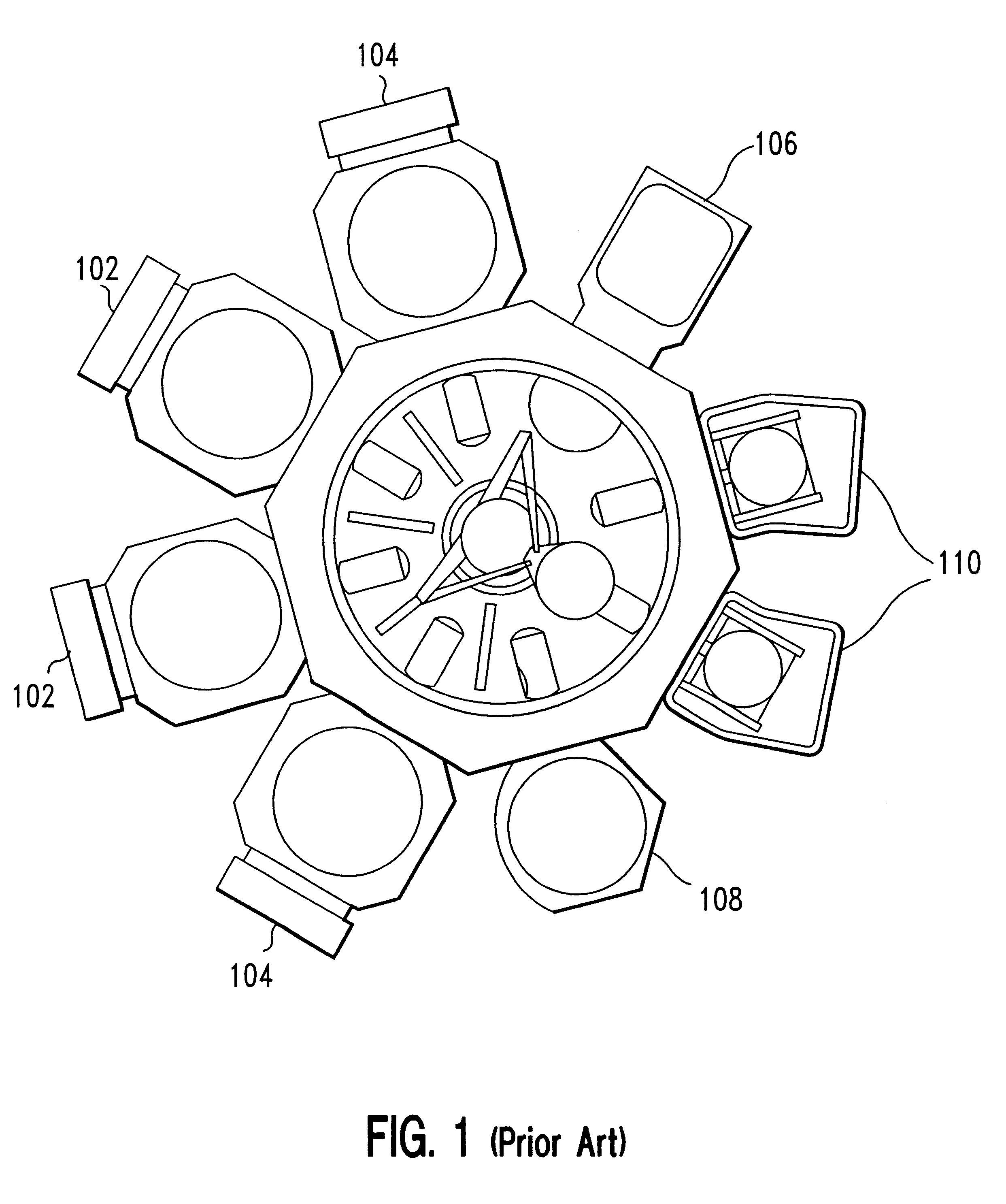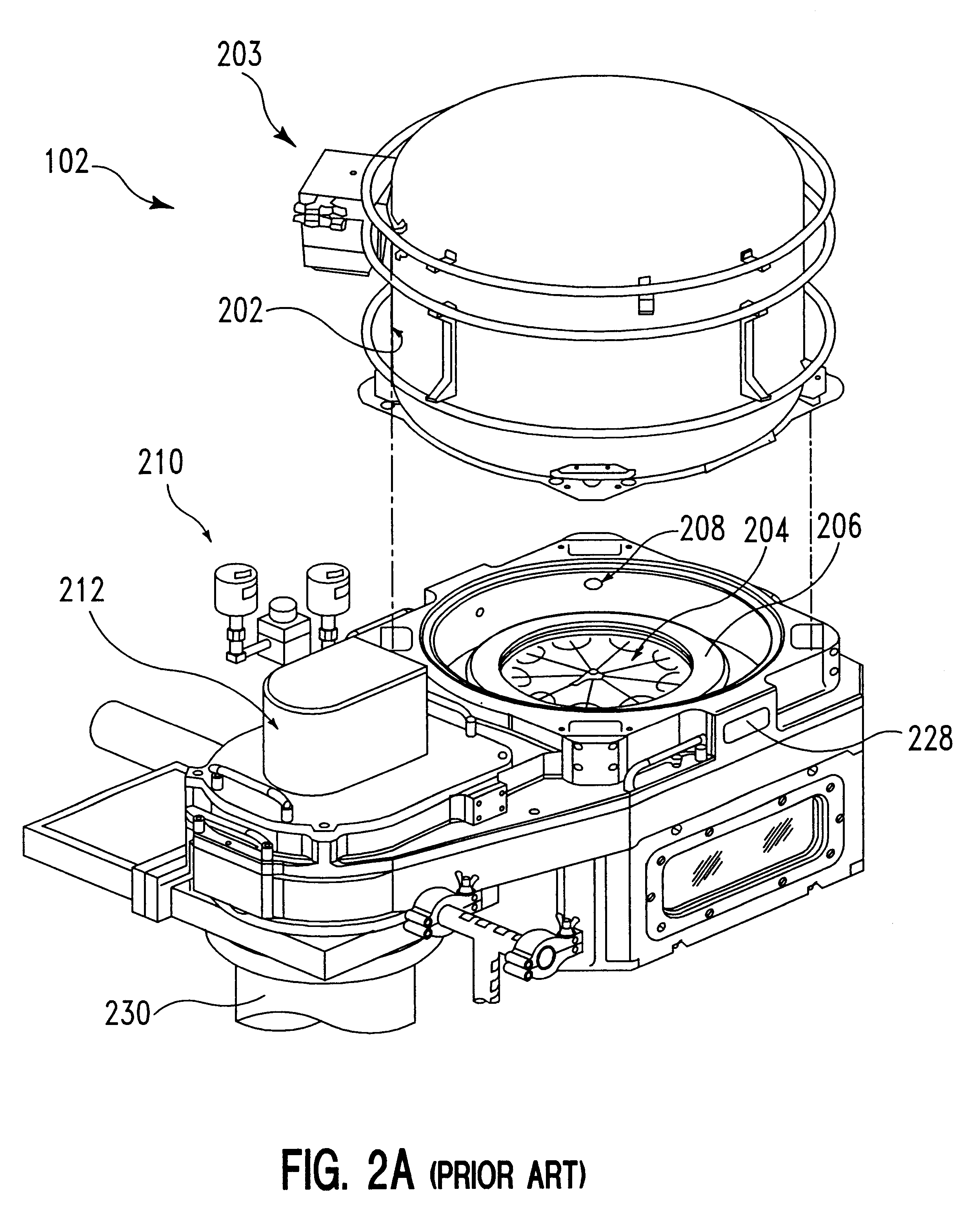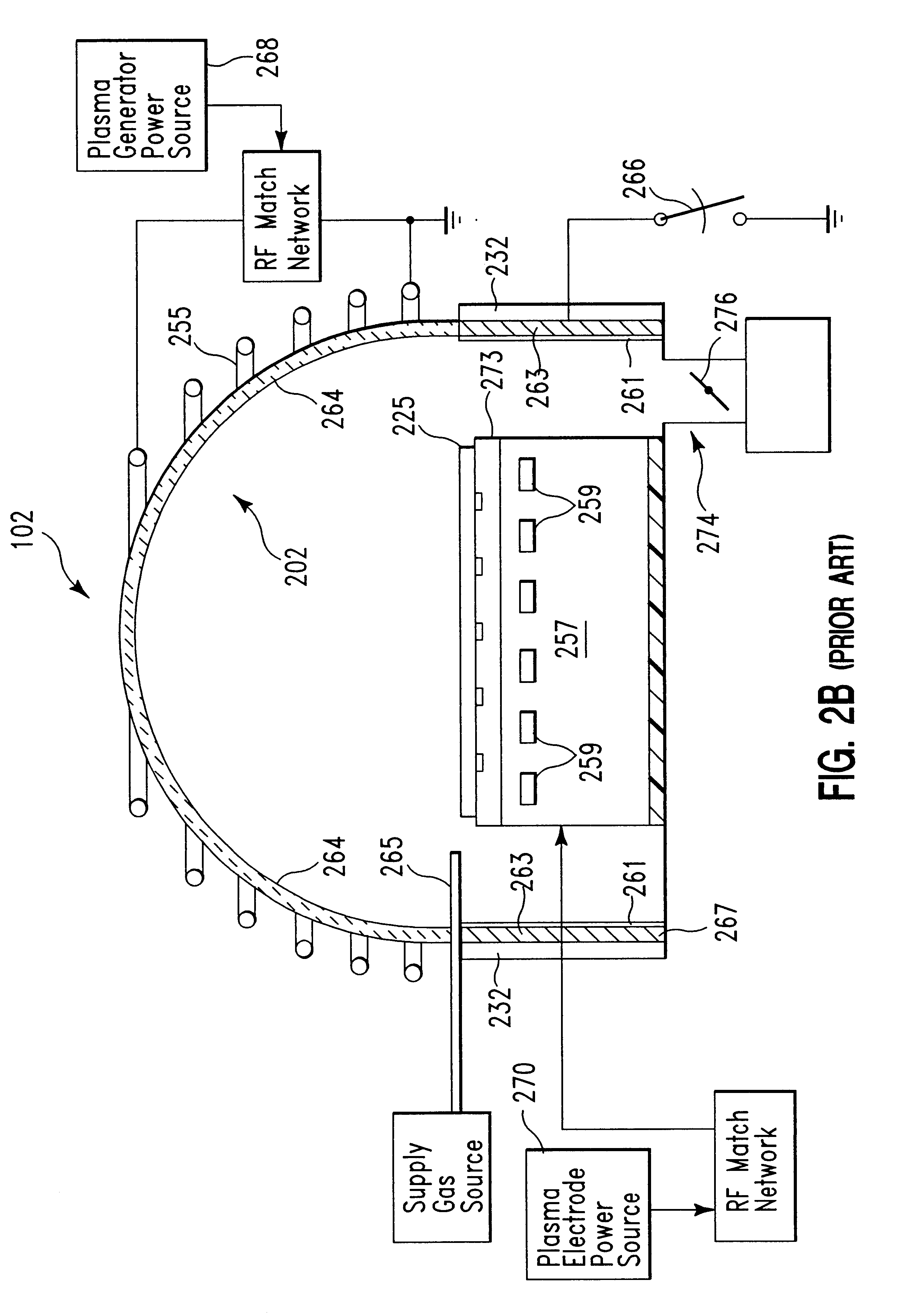Method of cleaning a semiconductor device processing chamber after a copper etch process
a technology of processing chamber and copper etching, which is applied in the direction of cleaning hollow objects, chemistry apparatus and processes, and using liquids to achieve the effect of avoiding the problem area of electrical resistance and stress migration resistance of aluminum, and avoiding the problem of etching copper
- Summary
- Abstract
- Description
- Claims
- Application Information
AI Technical Summary
Problems solved by technology
Method used
Image
Examples
example two
Three runs with varying numbers of wafers etched were conducted to provide an indication of the thickness of byproduct deposition on oxide wafer coupons taped onto various surfaces inside a DPS.TM. etch processing chamber. After each wet clean, the chamber was seasoned. The general procedure for wet clean typically includes the following steps: 1) deionized water rinse for 10 minutes; 2) deionized water ultrasonic for 1 hour; 3) deionized water rinse for 10 minutes; 4) ammonium hydroxide / hydrogen peroxide (1:1) soak for approximately 30 minutes (ceramic parts only); 5) deionized water rinse for 10 minutes; 6) N.sub.2 blow dry; and 7) convection oven bake at 120.degree. C. for 2 hours. The general procedure for seasoning of the chamber involves preparing the chamber conditions for copper etch, then cycling either ten blank oxide wafers or ten blank copper wafers or ten patterned "checkerboard" wafers. The standard "baseline" process recipe for copper etch is used during the seasoning...
PUM
| Property | Measurement | Unit |
|---|---|---|
| Temperature | aaaaa | aaaaa |
| Pressure | aaaaa | aaaaa |
| Pressure | aaaaa | aaaaa |
Abstract
Description
Claims
Application Information
 Login to View More
Login to View More - R&D
- Intellectual Property
- Life Sciences
- Materials
- Tech Scout
- Unparalleled Data Quality
- Higher Quality Content
- 60% Fewer Hallucinations
Browse by: Latest US Patents, China's latest patents, Technical Efficacy Thesaurus, Application Domain, Technology Topic, Popular Technical Reports.
© 2025 PatSnap. All rights reserved.Legal|Privacy policy|Modern Slavery Act Transparency Statement|Sitemap|About US| Contact US: help@patsnap.com



